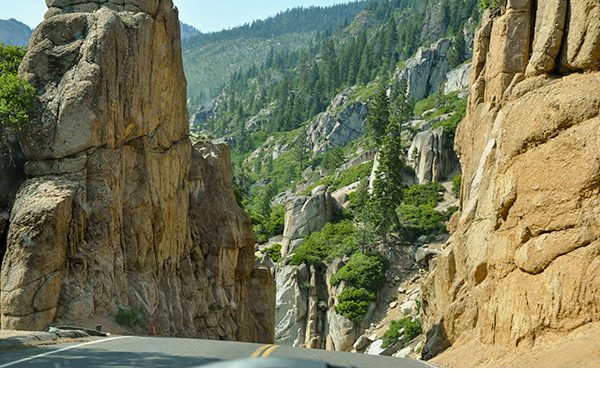LOCATION
Tuolumne (To-All-O-Me rhymes with “follow me”) County, 133 miles east of San Francisco, is a pristine, scenic expanse reaching into the foothills of the Sierra Nevada Mountains. The main highways leading to this picturesque, two-to-three-hour drive from the Bay Area are Highways 108 and 120 from the west (the latter considered to be the most scenic and direct route to Yosemite National Park) and Highway 49 from the north.
DESCRIPTION
Although relatively small, 2235 square miles, Tuolumne County is a region of great contrasts. In the west, pasturelands are at a modest 300 feet in elevation, but to the east the mountain terrain stretches for the sky, up to 9628 feet at the Sonora Pass on Highway 108 and 9941 feet at Tioga Pass on Highway 120 in Yosemite National Park. The Stanislaus National Forest, Yosemite National Park, and other surrounding areas provide incredible natural vistas and settings for hiking, water skiing, horseback riding, rafting, camping, snowmobiling, boating, snow skiing, fishing and other outdoor activities. But that is not all — manmade attractions abound, as well. Seven restored historic hotels, four golf courses, numerous gourmet restaurants, five wineries, train rides, casino, seven museums, two state historic parks, five live theaters and many charming bed-and-breakfasts are among the many other attributes that make the county a true year round vacation destination.
HISTORY
Gold was discovered in Tuolumne County in 1848, and like many areas in California’s Gold Country, this brought thousands of prospectors, who founded such Gold Rush towns as Columbia, Jamestown (then called “Jimtown”) and Sonora, all of which still remain today. Sonora was named the county seat in 1850, when Tuolumne became one of the state’s original counties. With advances in mining equipment, a second Gold Rush occurred in the 1890s, but by then the riches of the county began to extend beyond all that glitters. In the vast Sierra Nevada forests to the east, timber became a significant commercial commodity and led to the establishment of such present-day towns as Twain Harte and Tuolumne City. Cattle ranches and apple orchards also evolved into viable entities contributing to the area’s economy. And now due to breath- taking natural views and a history traced to frontier days, tourism has become an important part of this growth. With its beautiful, varied scenery and colorful past, the diversity of Tuolumne County has provided settings for more than 300 movies, television shows and commercials filmed there since 1919.
